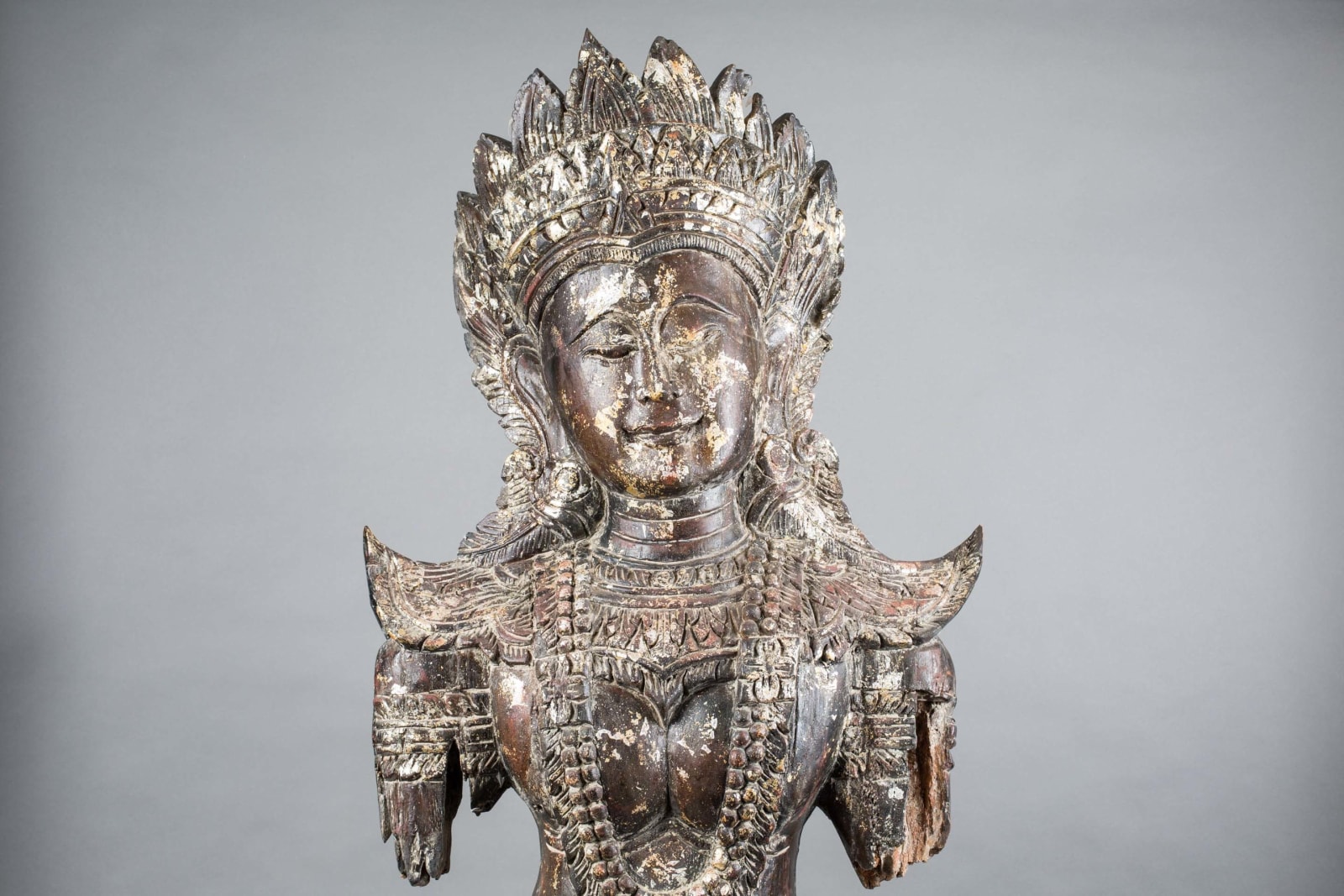Thai Lan Na style wooden sculpture of Tara, 16th Century - 18th Century CE
Wood
93 x 44 x 8 cm
36 5/8 x 17 3/8 x 3 1/8 in
36 5/8 x 17 3/8 x 3 1/8 in
CB.3413
Further images
During the 11th Century CE, Thai tribes migrating from southeastern China infiltrated and settled in the region of northern Thailand. By the beginning of the 14th Century, the independent Kingdom...
During the 11th Century CE, Thai tribes migrating from southeastern China infiltrated and settled in the region of northern Thailand. By the beginning of the 14th Century, the independent Kingdom of Lan Na was established under the leadership of the dynamic King Mengrai. At the height of its power, the Lan Na Kingdom controlled most of contemporary northern Thailand, extending into parts of western Laos, and rivaled Ayutthaya. The cultural and political center was the city of Chiang Mai, founded in 1327 CE. The art of the Lan Na Kingdom, produced between the 11th and 18th centuries, when the kingdom was absorbed into greater Siam, can be divided into two distinctive styles. The early style is called Chiang San after the city where many examples where discovered. Works from the Chiang San period reveal a wide range of influences, primarily from India and Cambodia. The later style is known as Chiang Mai, after the capital city, although it is sometimes referred to as Late Chiang San. Images of this later type reflect the Lan Na Kingdom’s contact with the central Sukhothai Kingdom from the 15th Century onwards.
This wooden sculpture of Tara from Lan Na exemplifies why Lan Na art style is perhaps the most intriguing style in Thailand. It shows how Theravada art style and Khmer style interact and integrate with each other, as shown by the exquisitely fine and precise carvings, as well as perfectly symmetrical patterns. Ornately dressed with an elaborate crown in decorated outfit, wearing flamboyant jewelry and keyura, Tara is depicted as a sweet, youthful, and beautiful, and elegantly smiling female in bodhisattva outlook. Her facial features are distinctively Lan Na, as shown by her slender eyebrows, elongated eyes, and thin lips. She has fully-grown breasts, a small waist, and slim physique, which is adopted from the earliest manifestation of a yakshi. She wears a sampot shaped like a waterfall, visibly influence by the Khmer Angkor style clothing.
This wooden sculpture of Tara from Lan Na exemplifies why Lan Na art style is perhaps the most intriguing style in Thailand. It shows how Theravada art style and Khmer style interact and integrate with each other, as shown by the exquisitely fine and precise carvings, as well as perfectly symmetrical patterns. Ornately dressed with an elaborate crown in decorated outfit, wearing flamboyant jewelry and keyura, Tara is depicted as a sweet, youthful, and beautiful, and elegantly smiling female in bodhisattva outlook. Her facial features are distinctively Lan Na, as shown by her slender eyebrows, elongated eyes, and thin lips. She has fully-grown breasts, a small waist, and slim physique, which is adopted from the earliest manifestation of a yakshi. She wears a sampot shaped like a waterfall, visibly influence by the Khmer Angkor style clothing.









